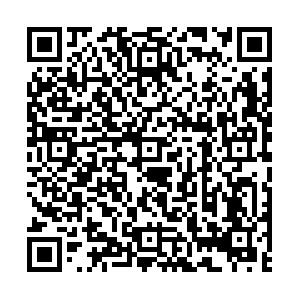Problems and Optimization Strategies in the Selection of Policy Instruments for After-school Services inChina——An Econometric Analysis Based on 27 Provincial Policy Texts
-
摘要:
本研究基于内容分析法构建政策工具和工作要素的二维分析框架,对我国省级政府课后服务政策工具构成进行计量分析。研究发现,我国课后服务政策工具选择存在内部结构性失衡、政策供给不均衡,以及课后服务政策工具与工作内容要素间不匹配等问题。应优化政策工具的结构性,提升课后服务政策的协同效力;增强政策工具的均衡性,实现课后服务政策的长远目标;完善政策工具的匹配性,创设课后服务实施的良好环境。
Abstract:A two- dimensional analysis framework of policy tools and work elements was constructed based on content analysis, and an econometric analysis was conducted on the composition of after-school service policy tools of provincial governments in China. It is found that there is internal structural imbalance in the selection of after-school service policy tools, unevenness in policy supply, and mismatch between after-school service policy tools and work content elements, which adversely affect the implementation of after-school service work in China. By optimizing the structure of policy tools, the synergistic effectiveness of after-school service policies should be enhanced; enhancing the balance of policy tools to achieve the long-term goals of after-school service policies; and improving the matching of policy tools to create a favorable environment for the implementation of after-school service.
-
Key words:
- after-school services /
- policy instruments /
- econometric analysis /
-
[1] 李醒东,赵伟春,陈蕊蕊.对义务教育阶段学生课后服务的再思考[J].中国教育学刊, 2020(11):61-65+91. [2] 《教育部办公厅关于做好中小学生课后服务工作的指导意见》[EB/OL].[2017-03-12]. http://www. moe. gov. cn/srcsite/A06/201703/t20170304_298203. html. [3] 严强.公共政策学[M].北京:社会科学文献出版社, 2008:94. [4] 莱斯特·M.萨拉蒙.公共服务中的伙伴:现代福利国家中政府与非营利组织的关系[M].田凯,译.北京:商务印书馆, 2008:23. [5] 邓亮,赵永辉.江西省中小学课后服务工作的现状调查与分析[J].南昌师范学院学报, 2019(5):124-127. [6] 艾尔·巴比.社会研究方法(第11版)[M].邱洋奇,译.北京:华夏出版社, 2009:318-328. [7] 李纲.公共政策内容分析方法:原理与应用[M].重庆:重庆大学出版社, 2007:4. [8] 陈振明,张敏.国内政策工具研究新进展:1998-2016[J].江苏行政学院学报, 2017(6):109-116. [9] Elmore RF. Instrument sand strategy in Public Policy[J]. Policy Studies Review, 1987, 7(1):174-186. [10] Schneider A, Ingram H. Behavioral As-sumptions of Policy Tools[J]. Journal of Politics, 1990, 52(2):522. [11] Rothwell R, Zegveld W. Reindusdalization and Technology[M]. London:Logman Group Limited, 1984:436-444. [12] 谢倩,王子成,周明星.新中国成立70年乡村教师支持政策文本量化分析——基于政策工具视角[J].现代教育管理, 2020(4):61-67. [13] 张亚飞.主要发达国家中小学课后服务研究[J].外国教育研究, 2020(2):59-69. [14] 屈璐.我国基础教育课后服务政策嬗变及展望[J].现代远距离教育, 2019(4):14-19. [15] 何光桥.家长参与学校管理存在的问题、原因与对策[J].教学与管理, 2019(1):39-41. [16] 马健生,邹维."三点半现象"难题及其治理——基于学校多功能视角的分析[J].教育研究, 2019(4):118-125. [17] 唐守伦.解决"三点半难题"政府要舍得花钱[N].中国教育报, 2018-04-17(2). [18] 顾艳丽,罗生全.中小学课后服务政策的价值分析[J].教育科学研究, 2018(9):34-38. [19] 黄忠敬.教育政策导论[M].北京:北京大学出版社, 2011:93. [20] 上海市教育委员会等.关于进一步做好本市小学生校内课后服务工作的通知[EB/OL].[2019-03-14]. http://edu. sh. gov. cn/html/article/201903/99514. html. [21] 广东省教育厅.关于做好中小学生校内课后服务工作的指导意见[EB/OL].[2018-03-22]. http://edu. gd. gov. cn/gkmlpt/content/2/2102/post_2102594. html. -

 点击查看大图
点击查看大图
计量
- 文章访问数: 888
- HTML全文浏览量: 203
- PDF下载量: 33
- 被引次数: 0



 下载:
下载: